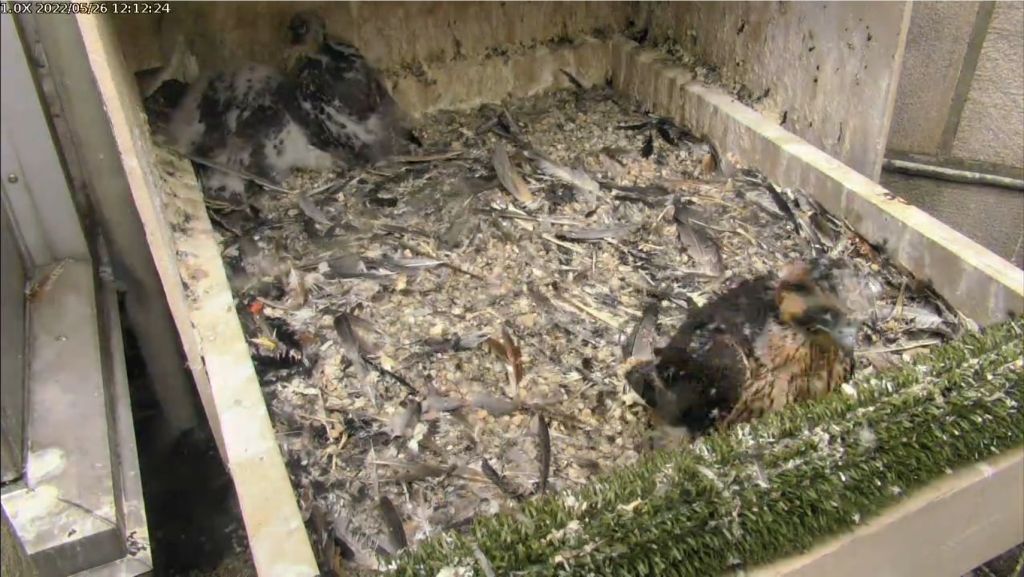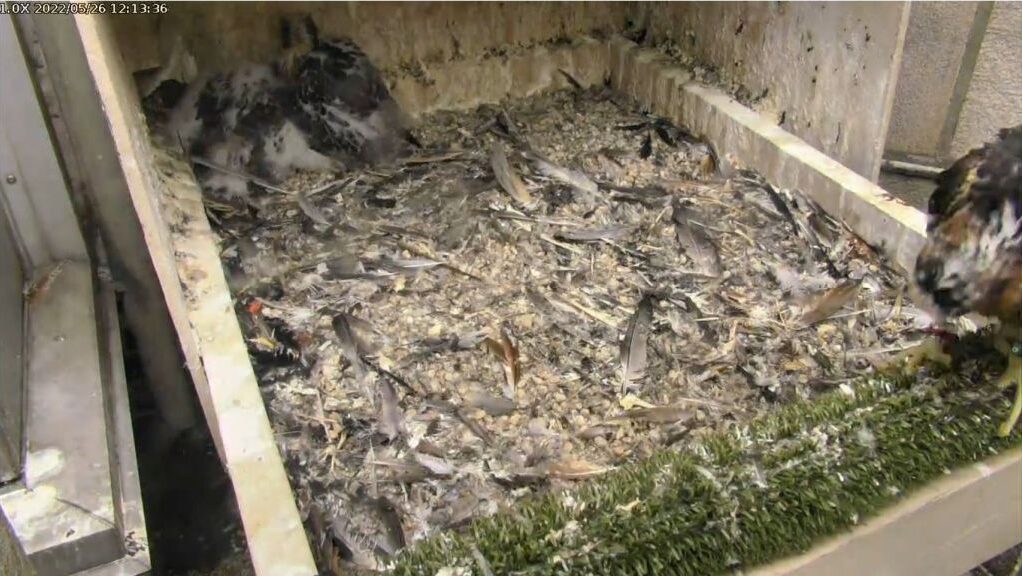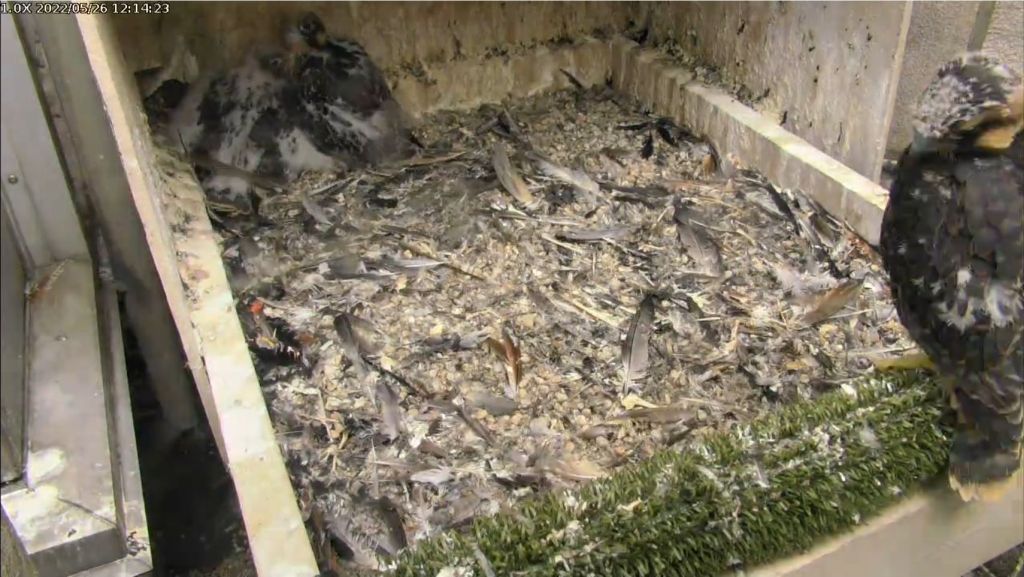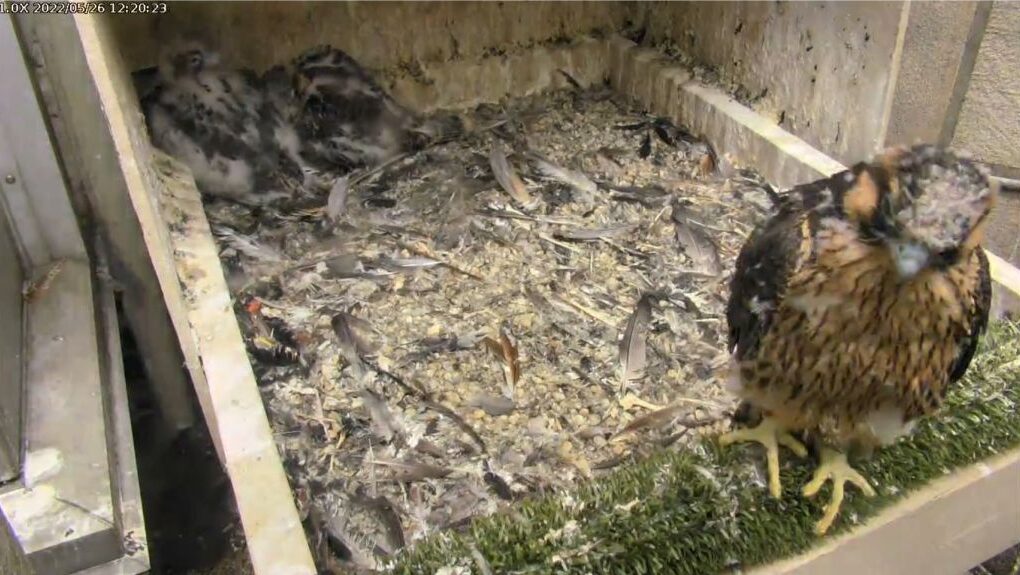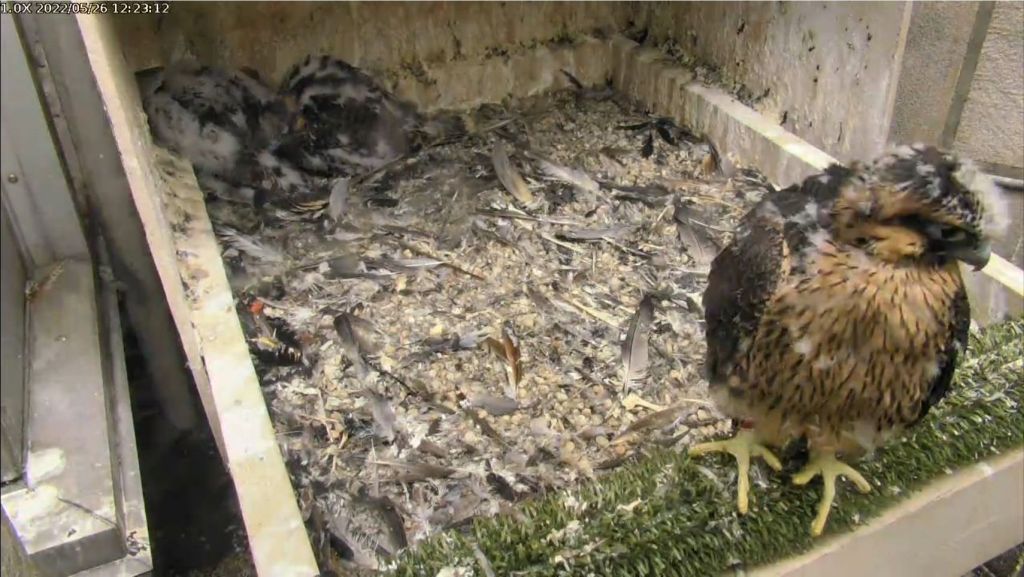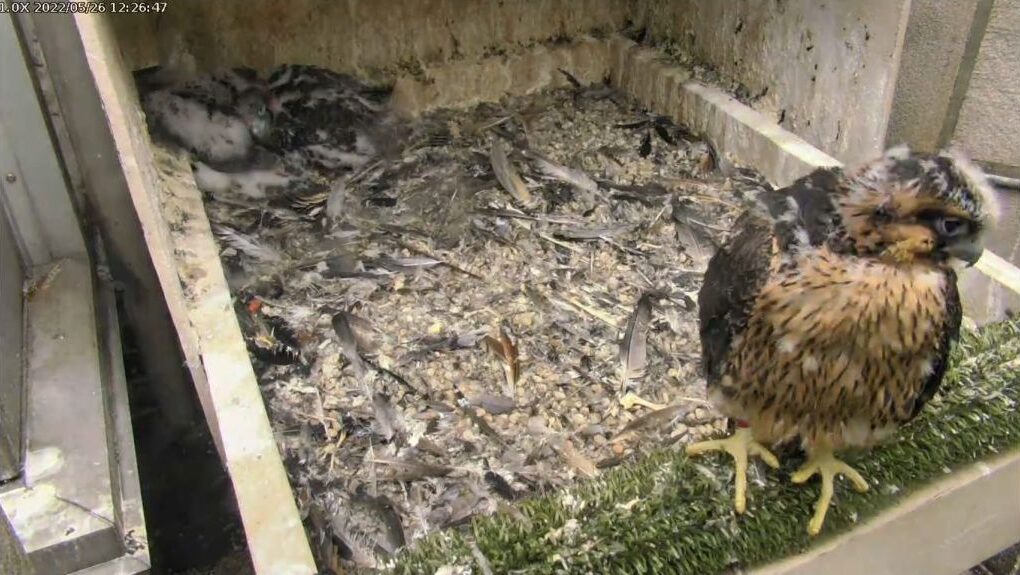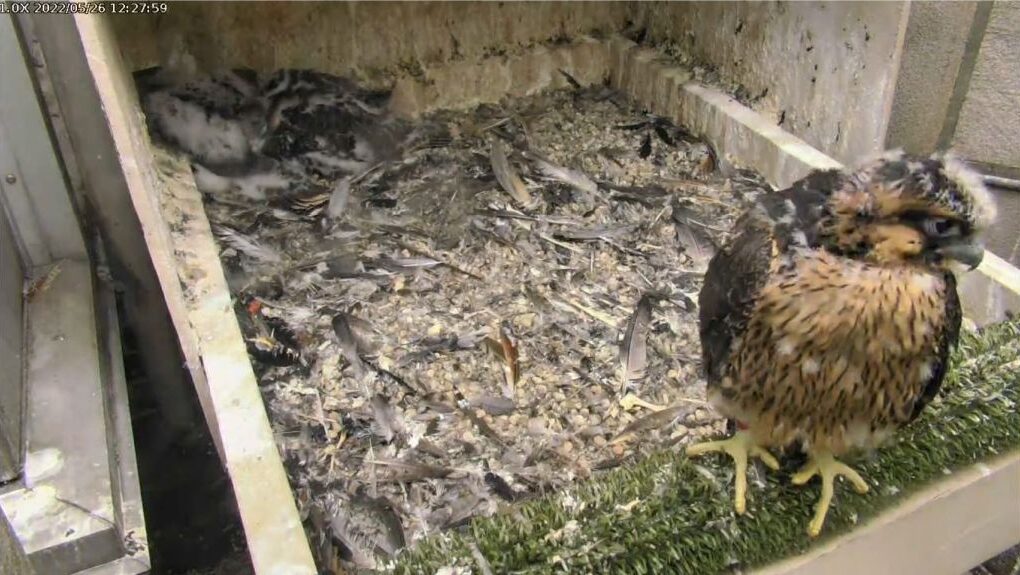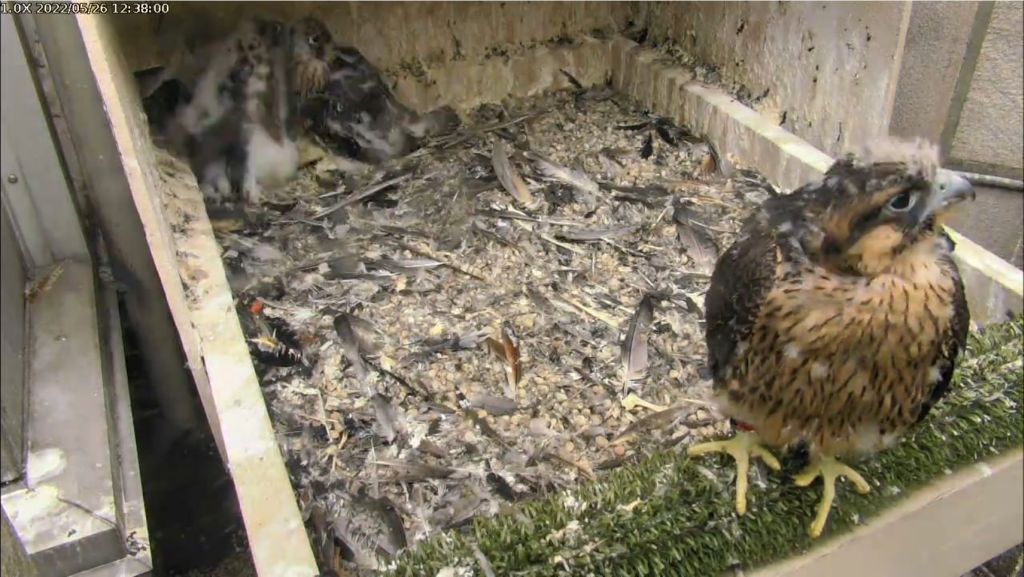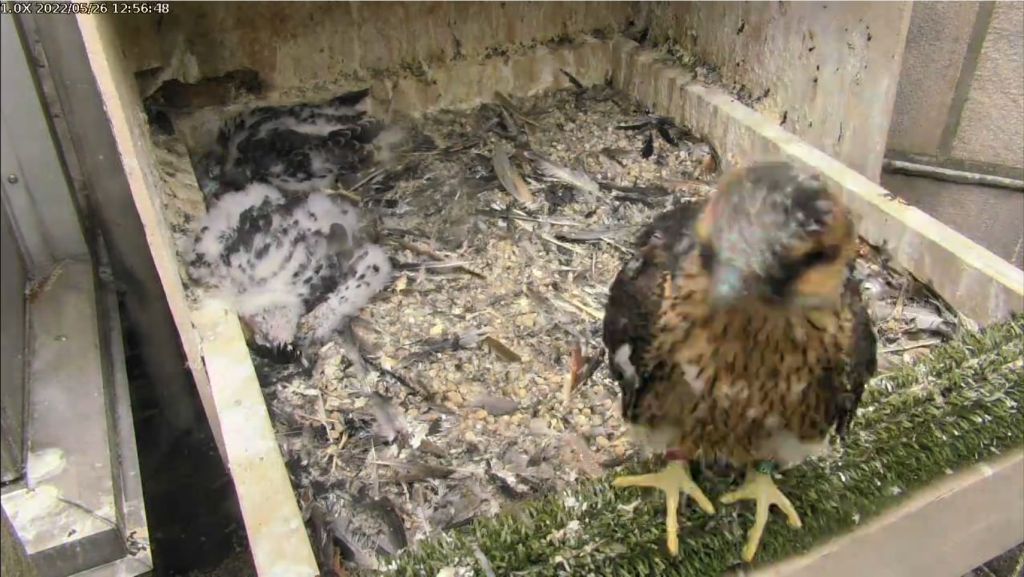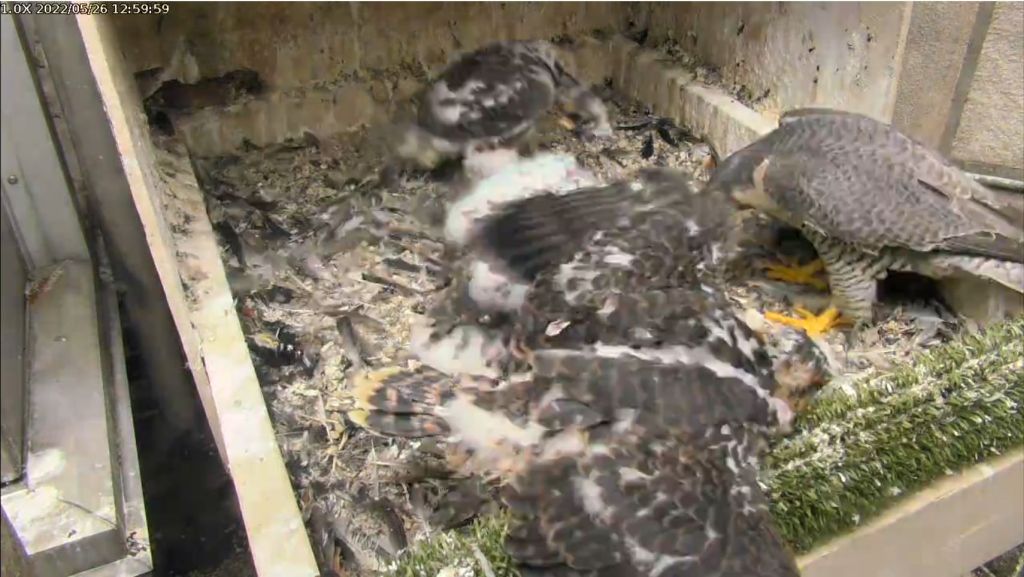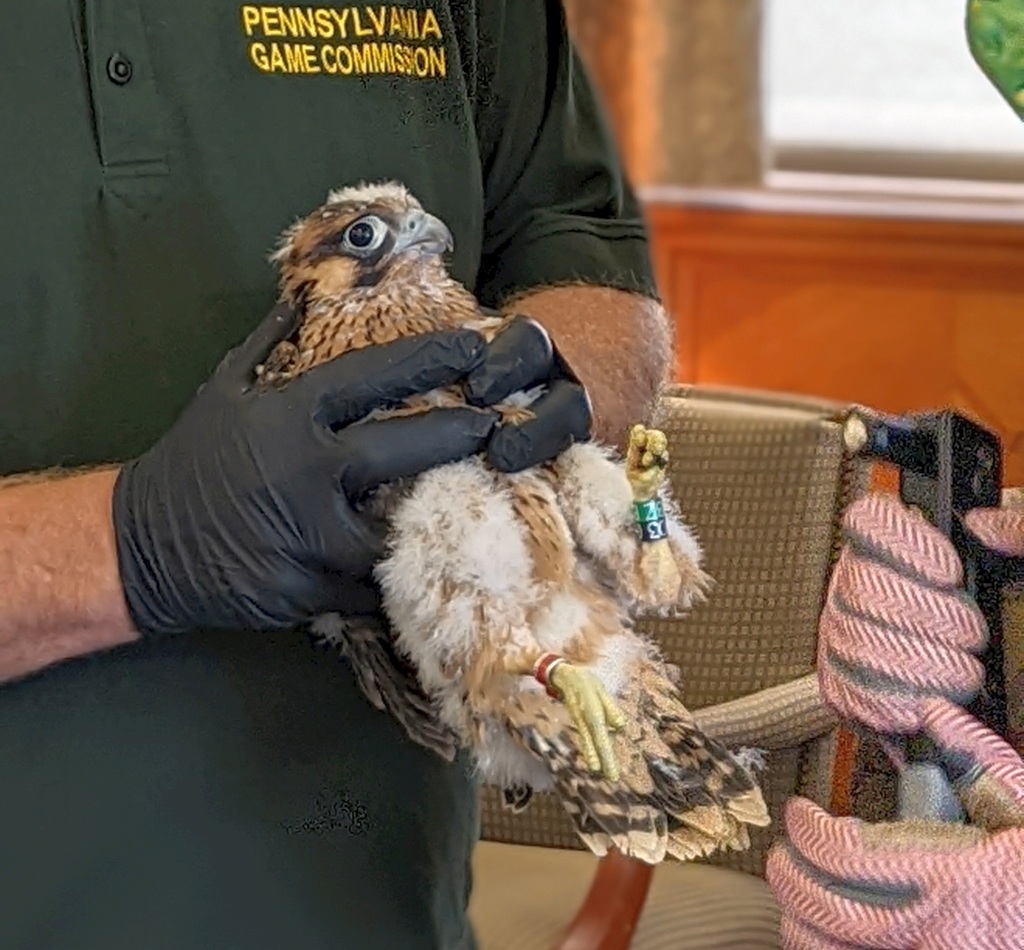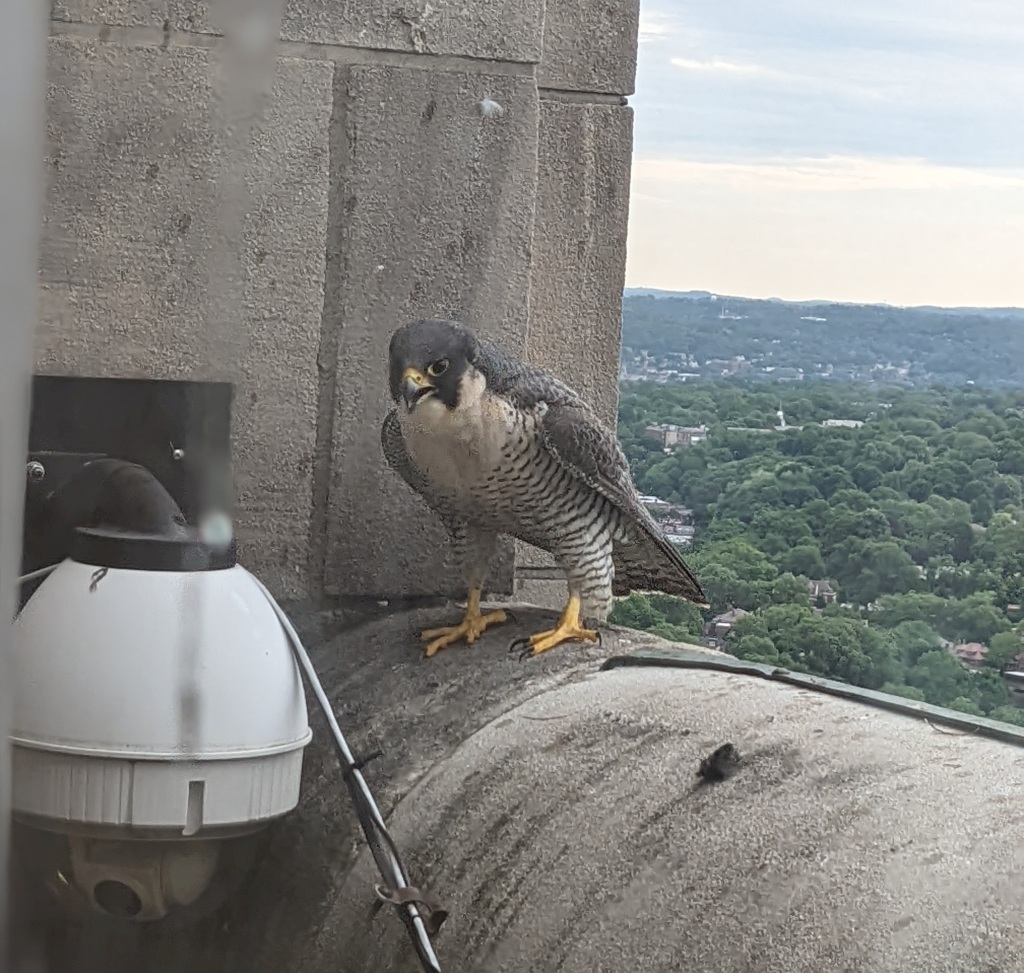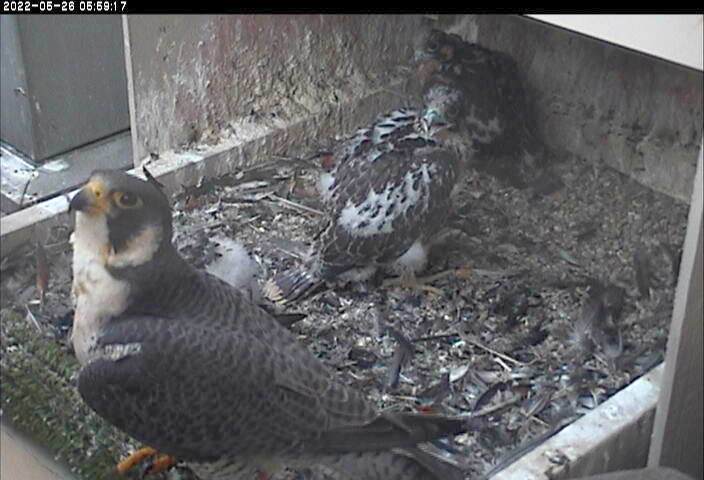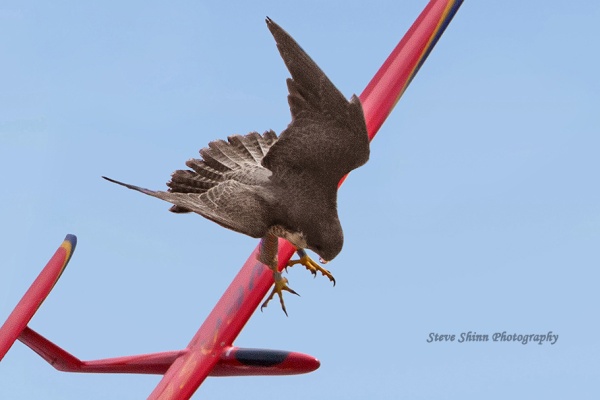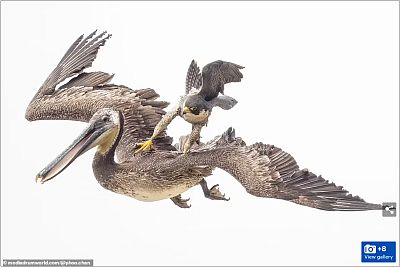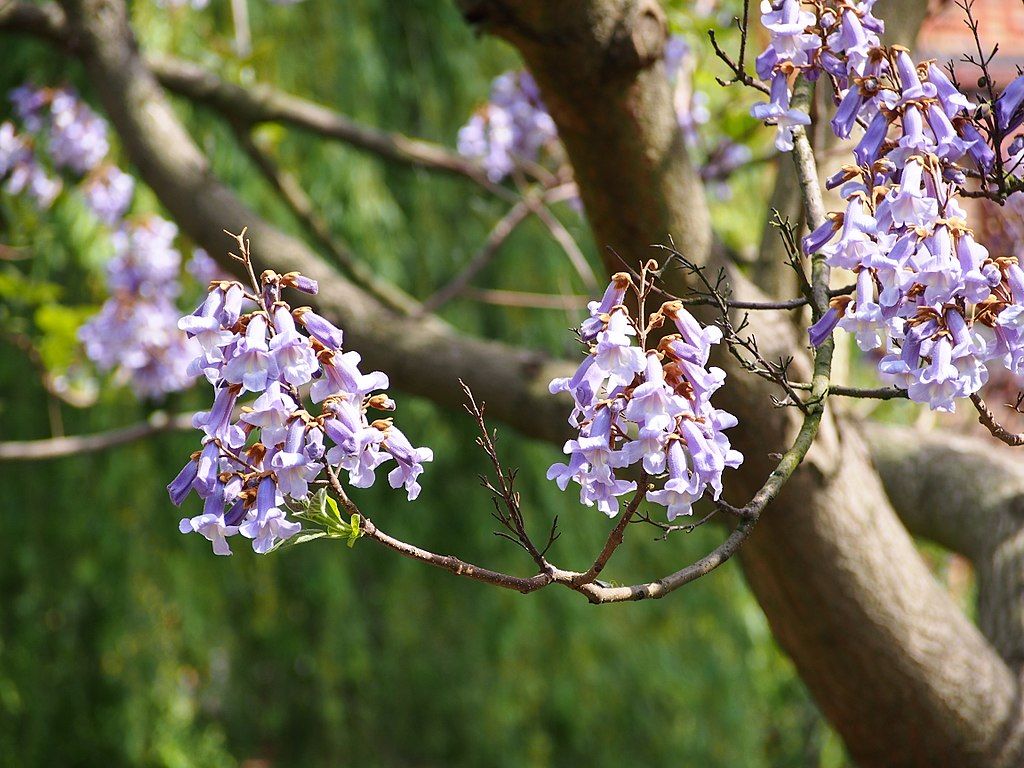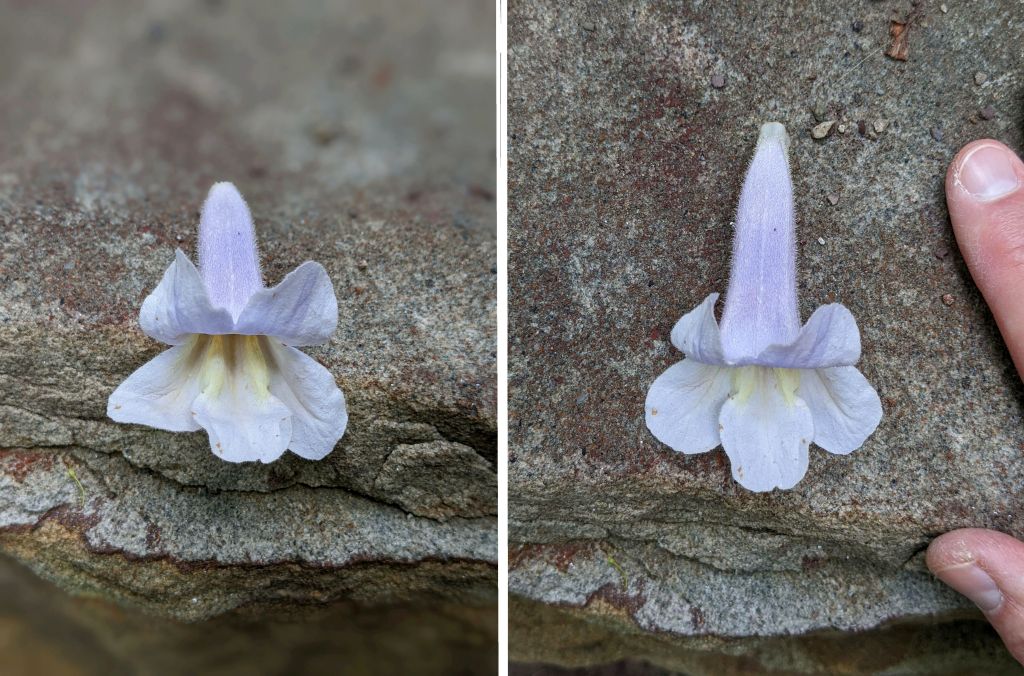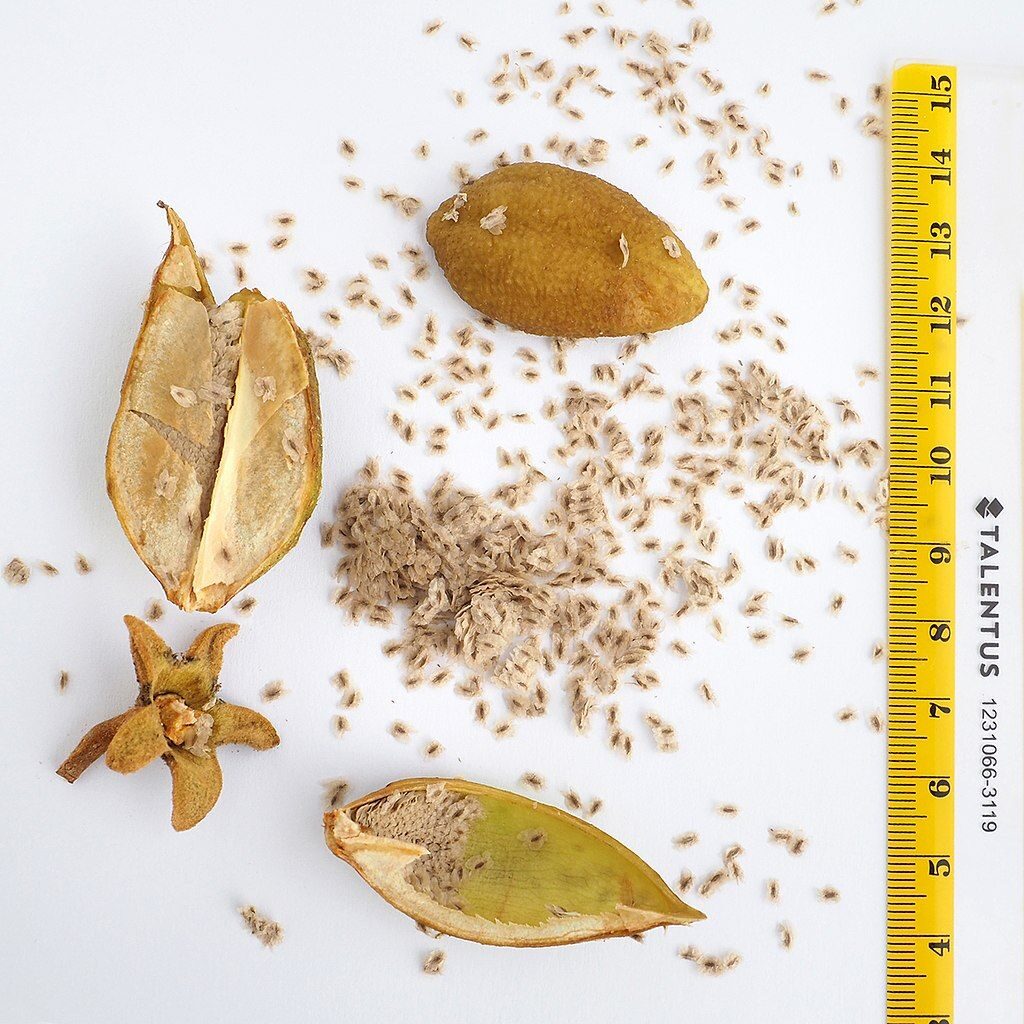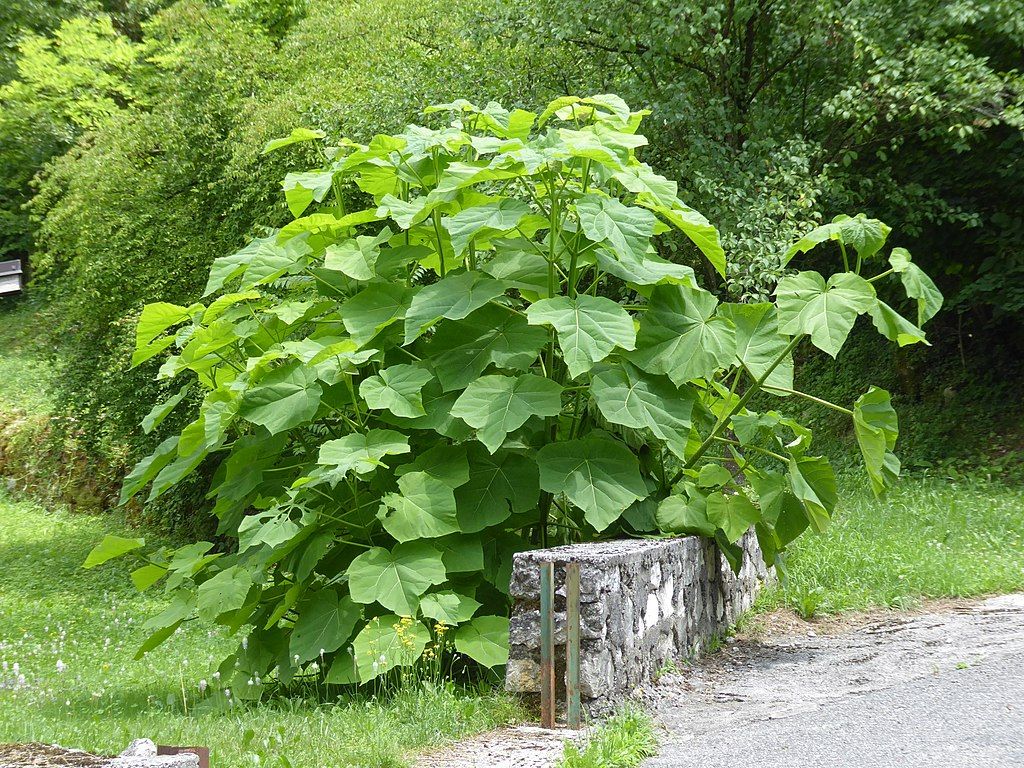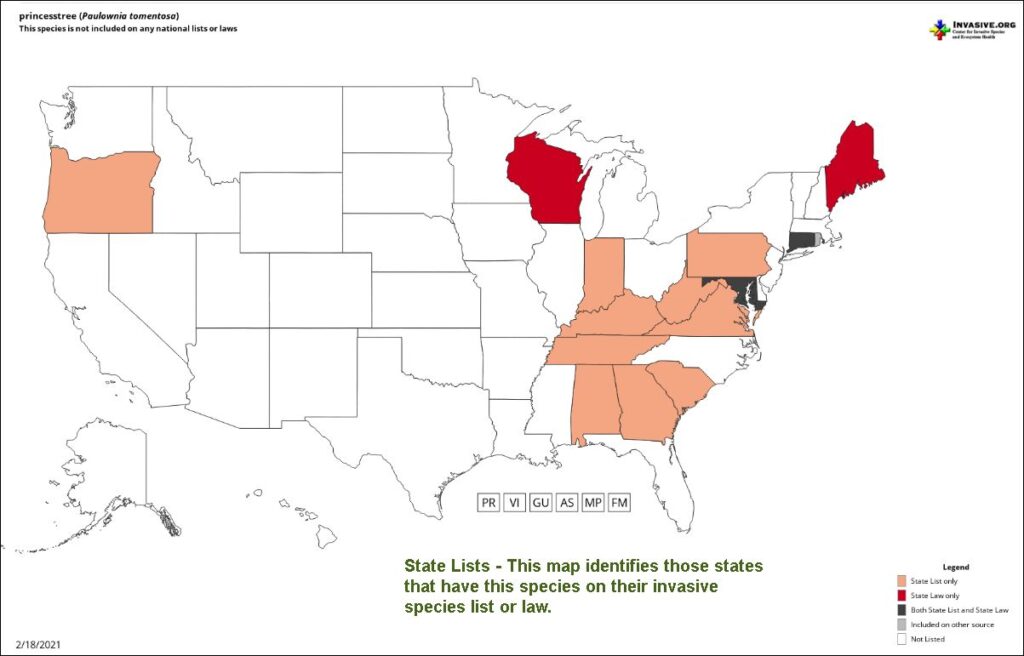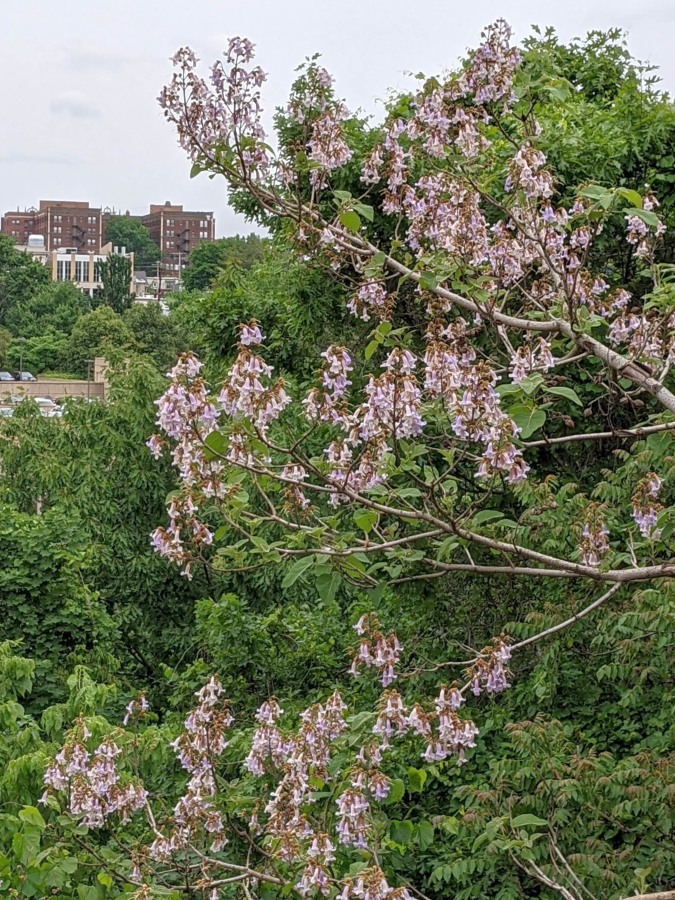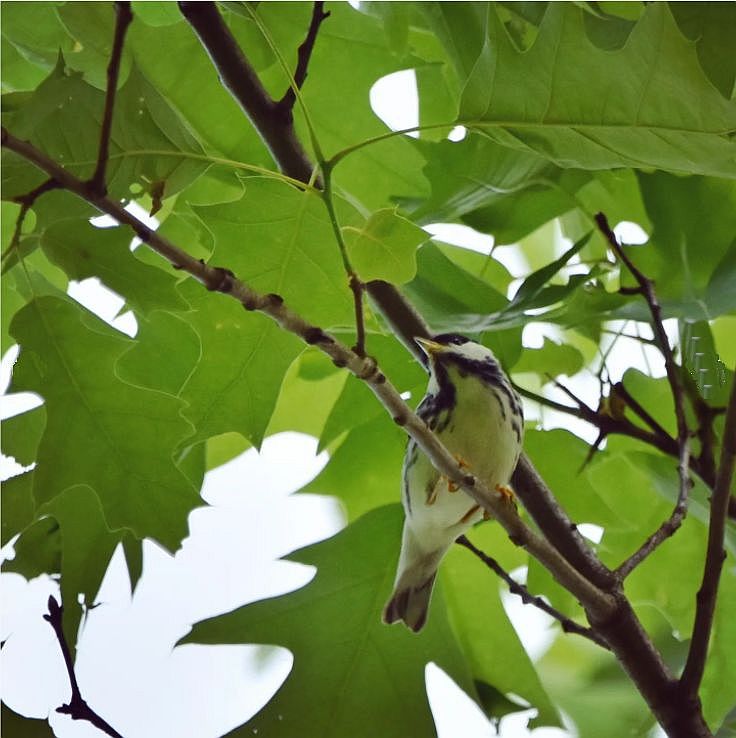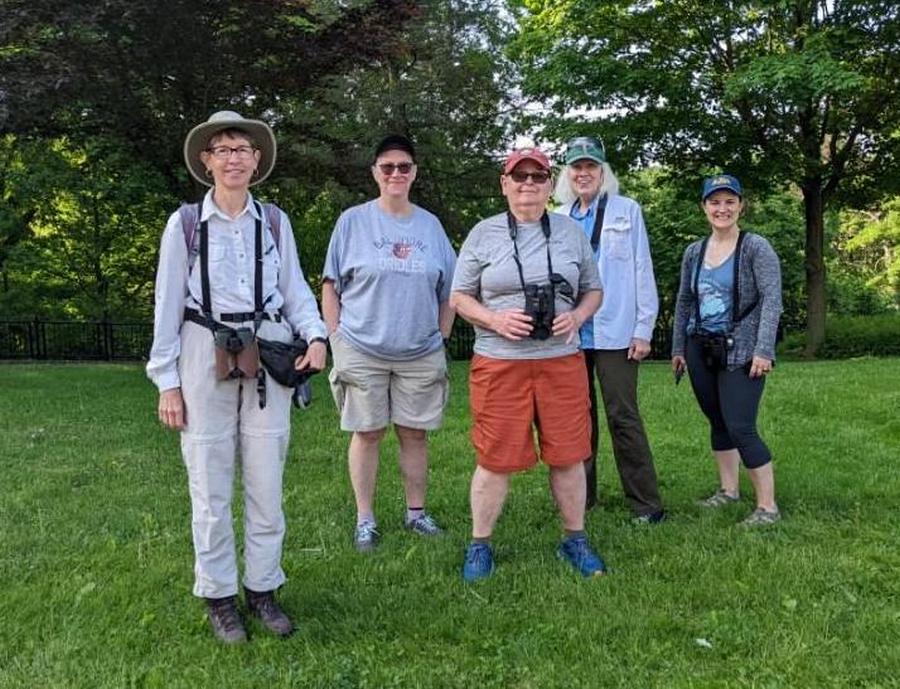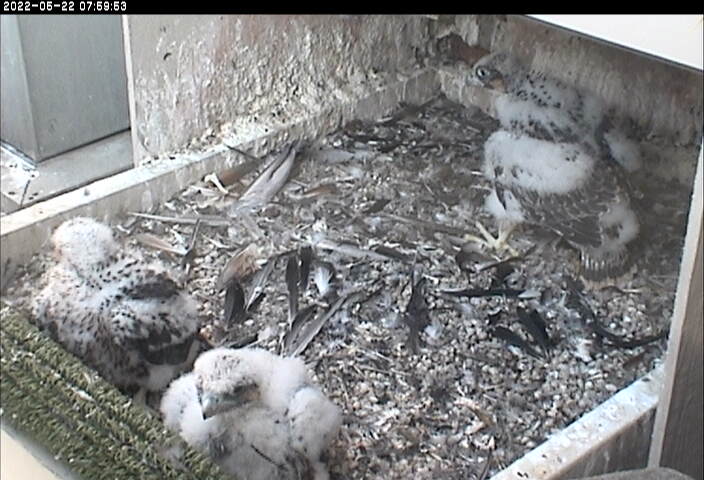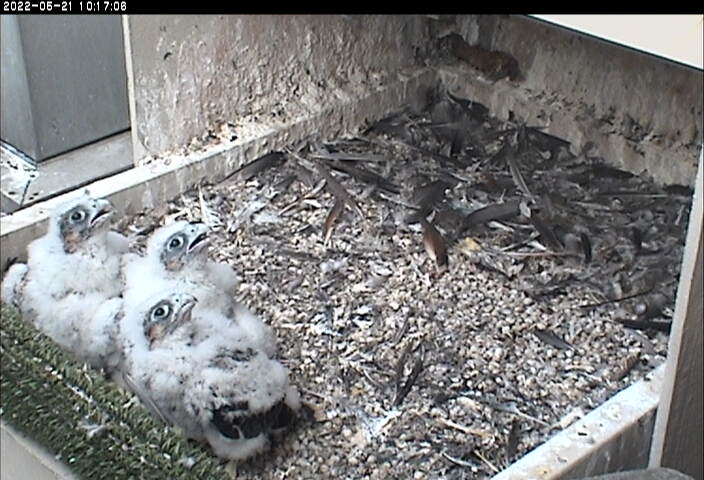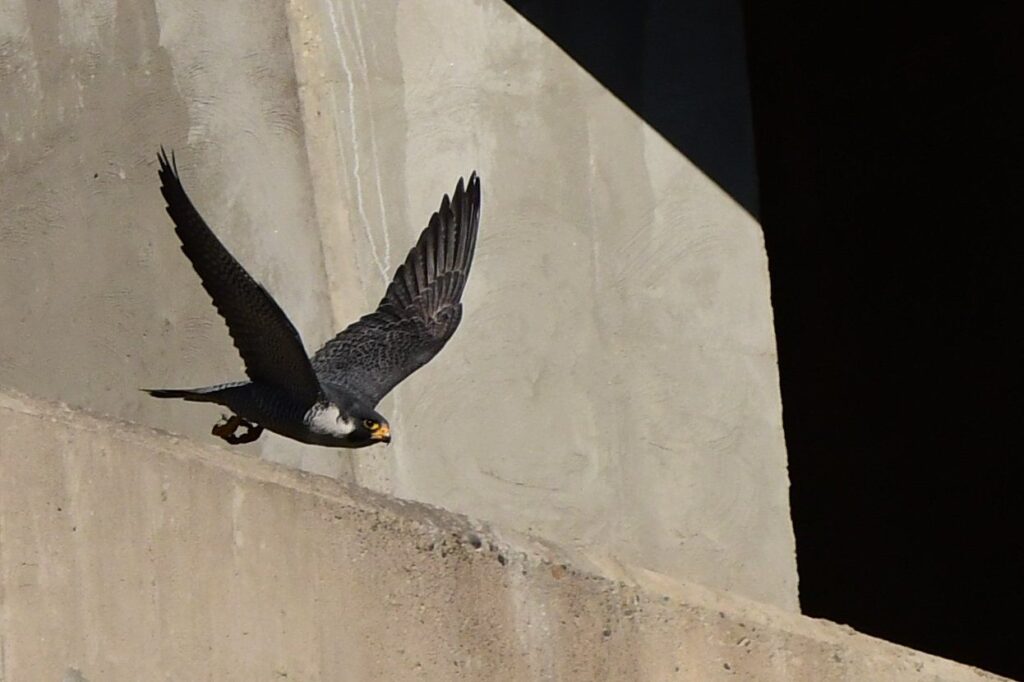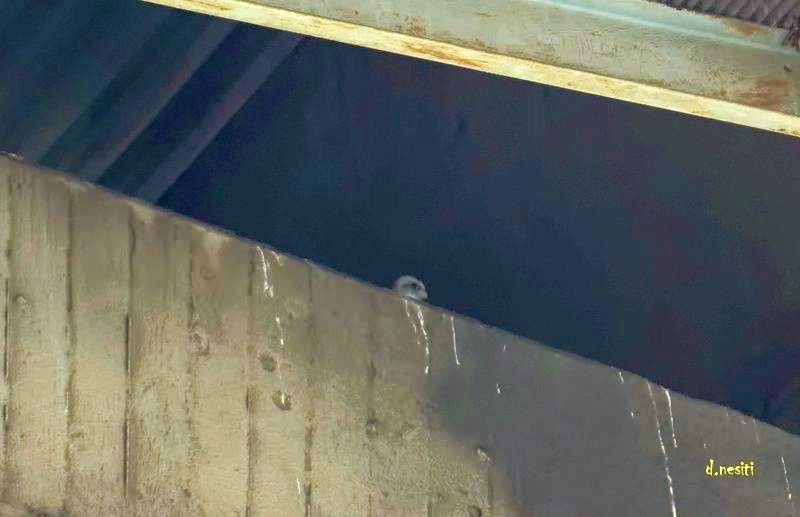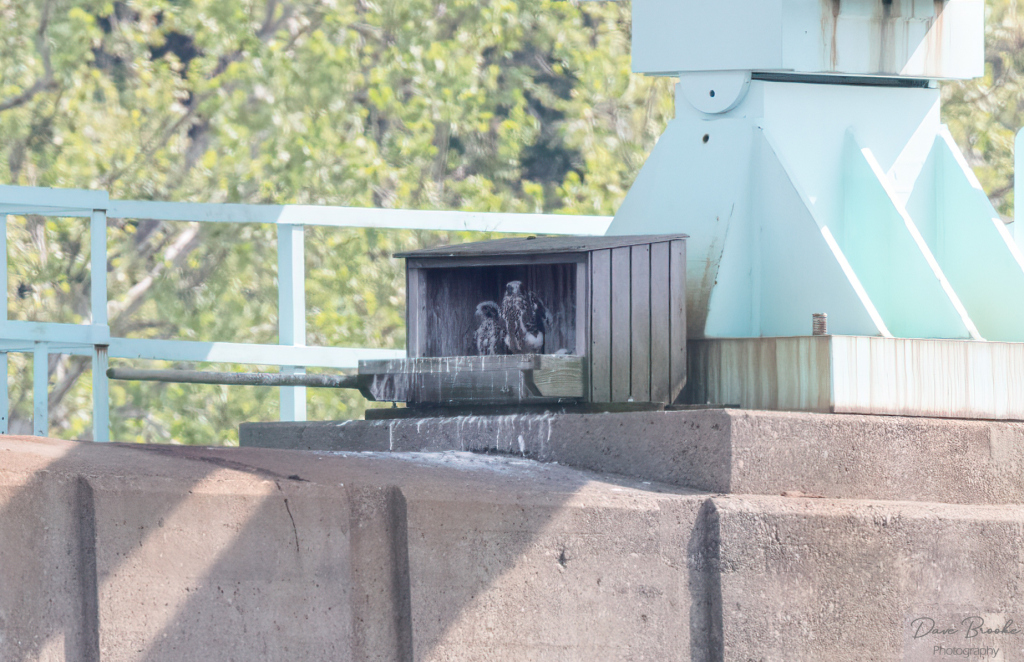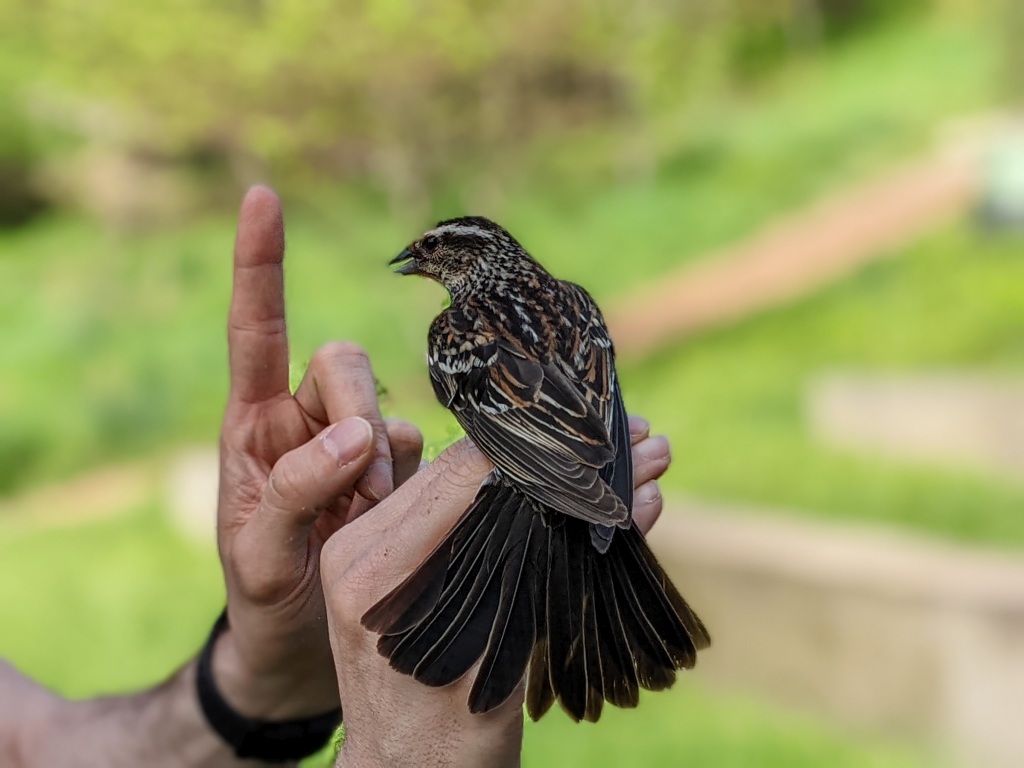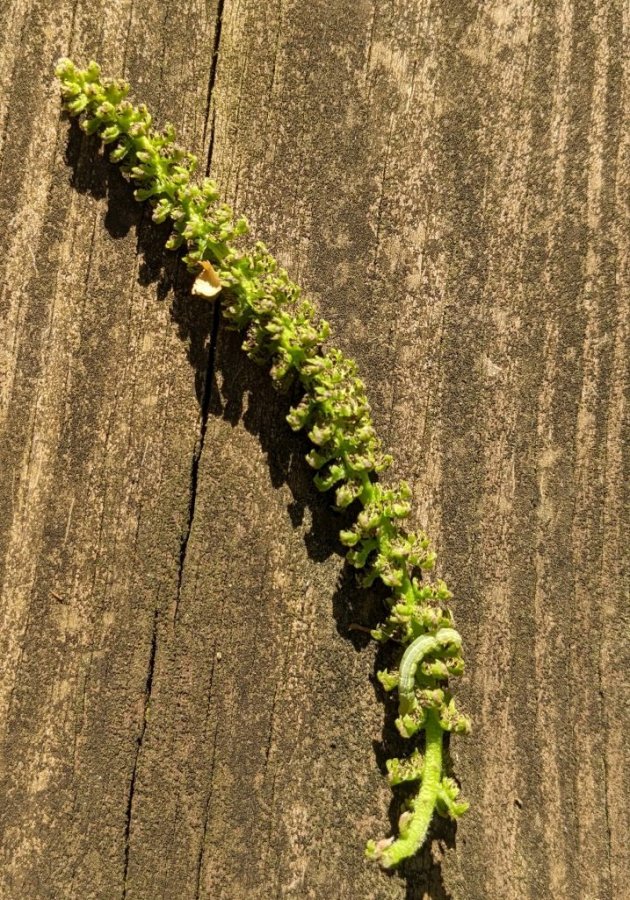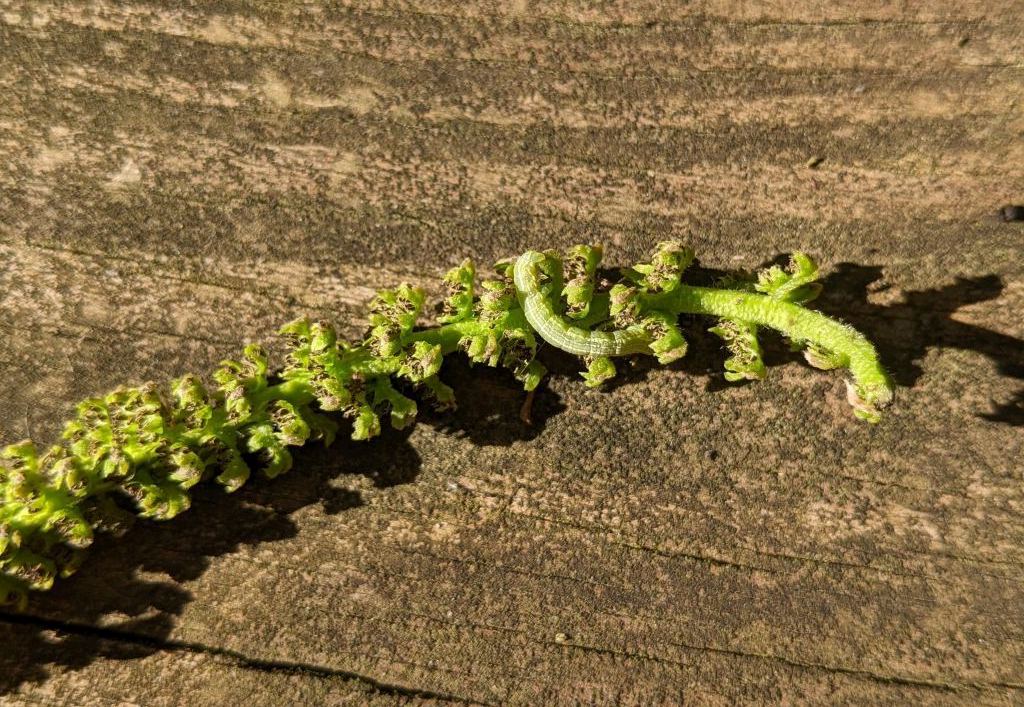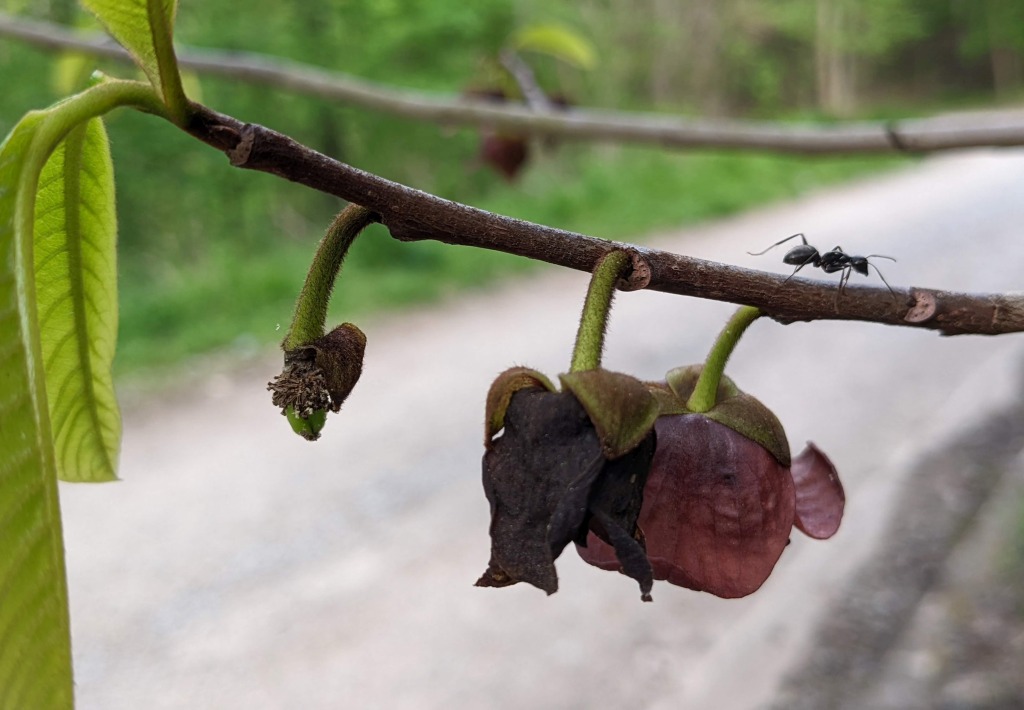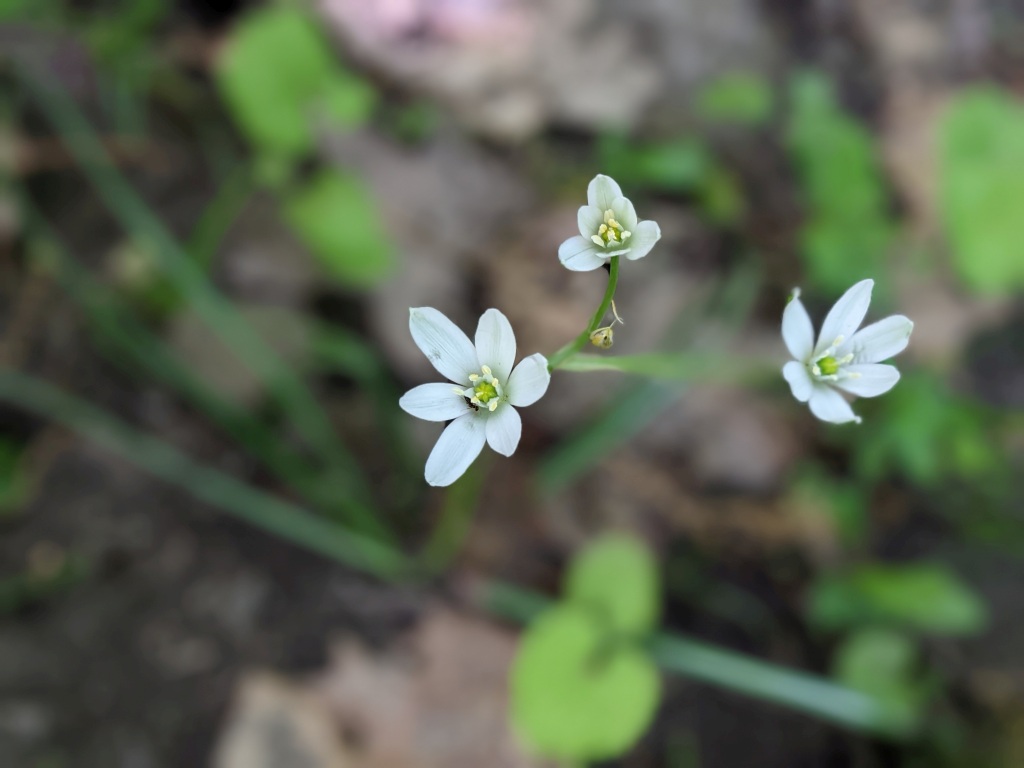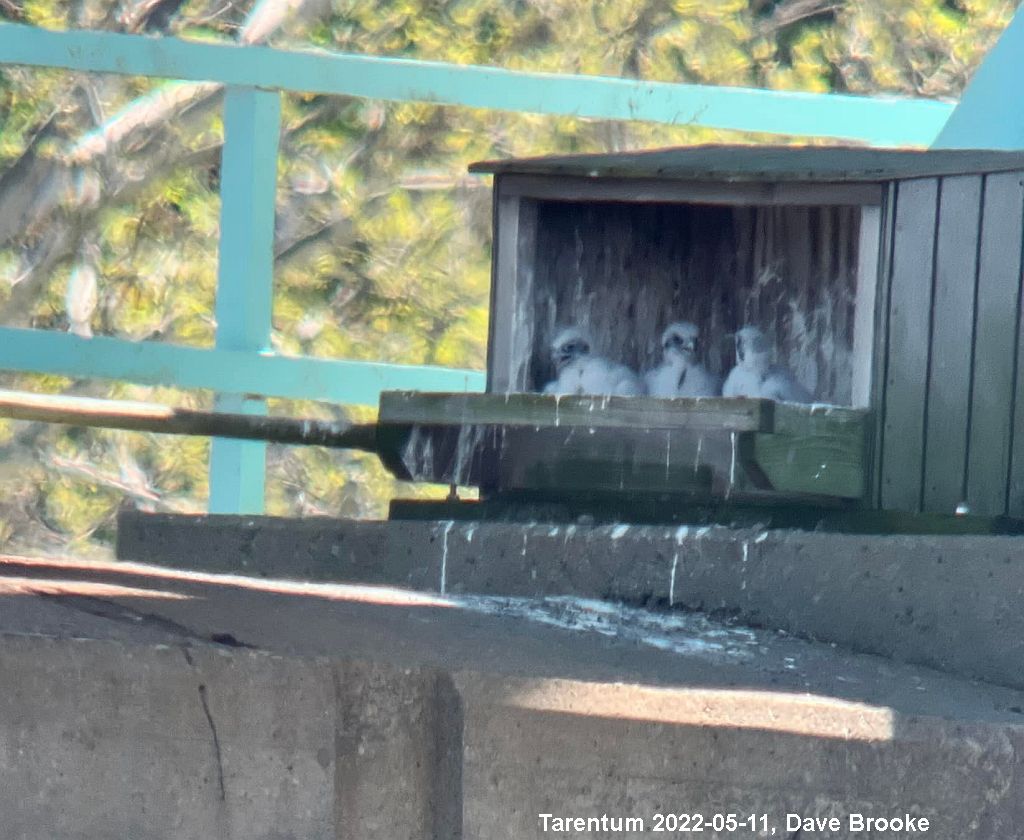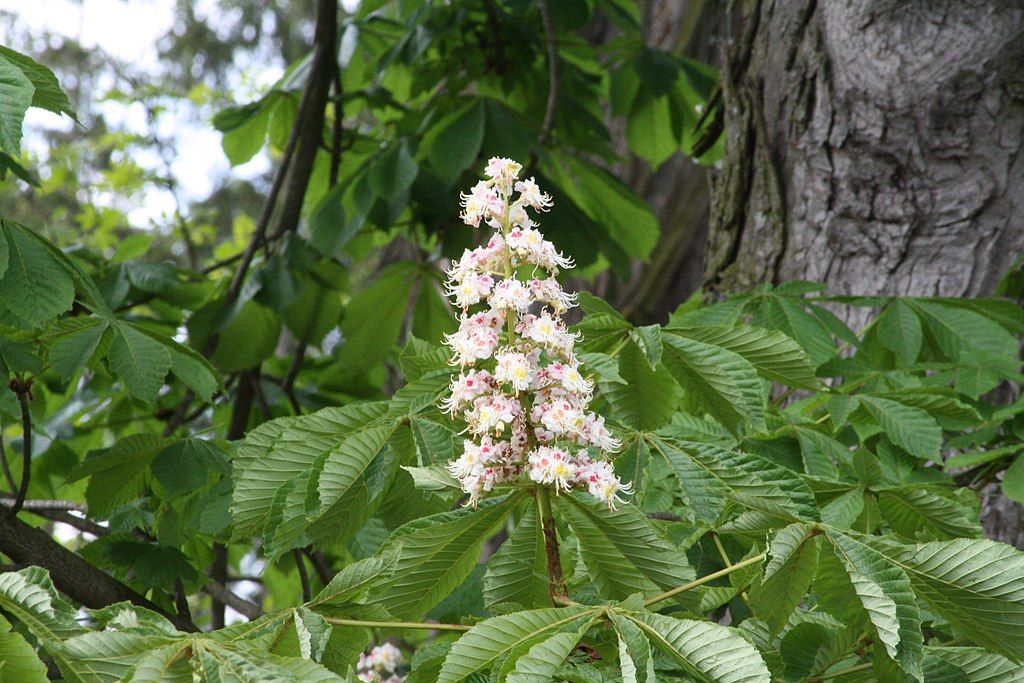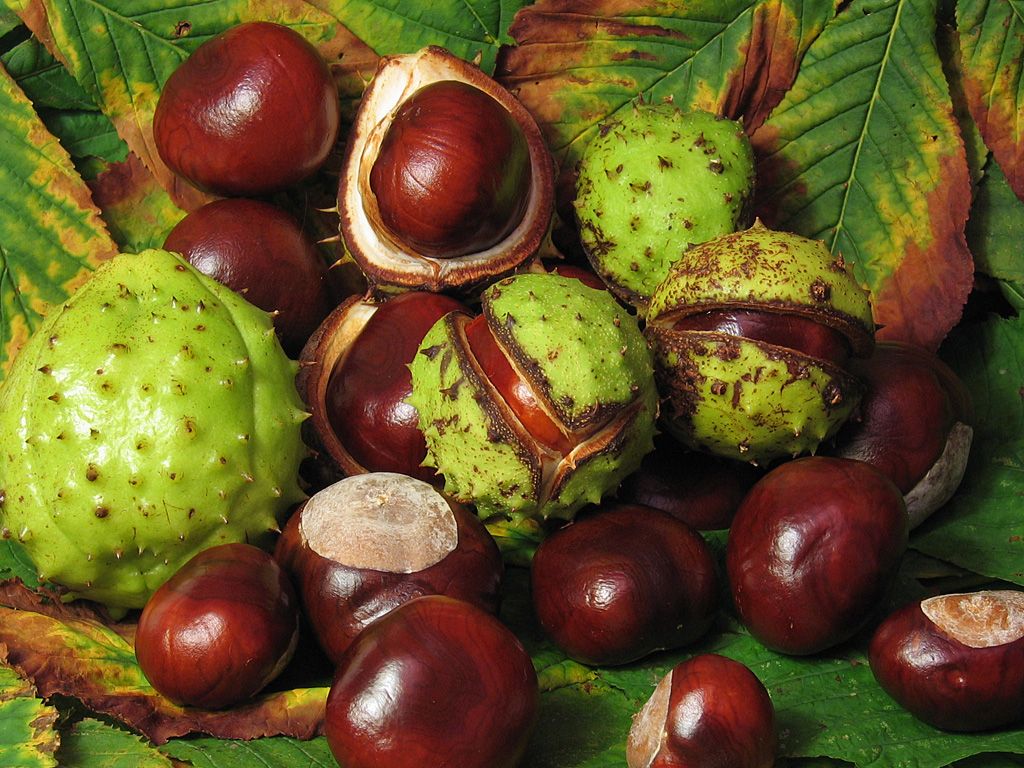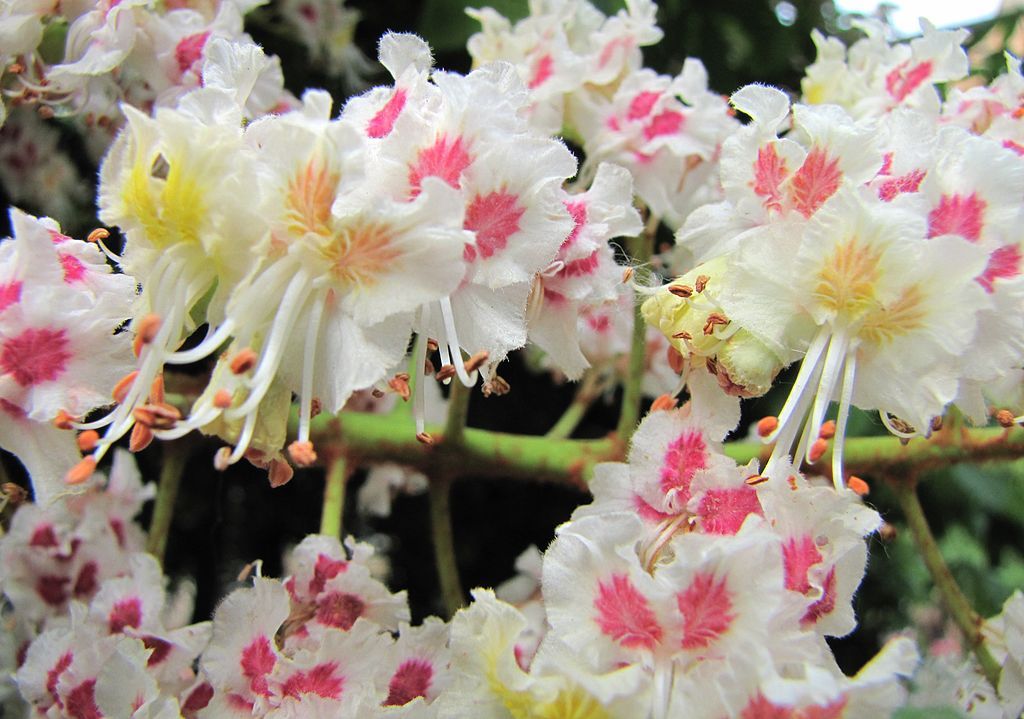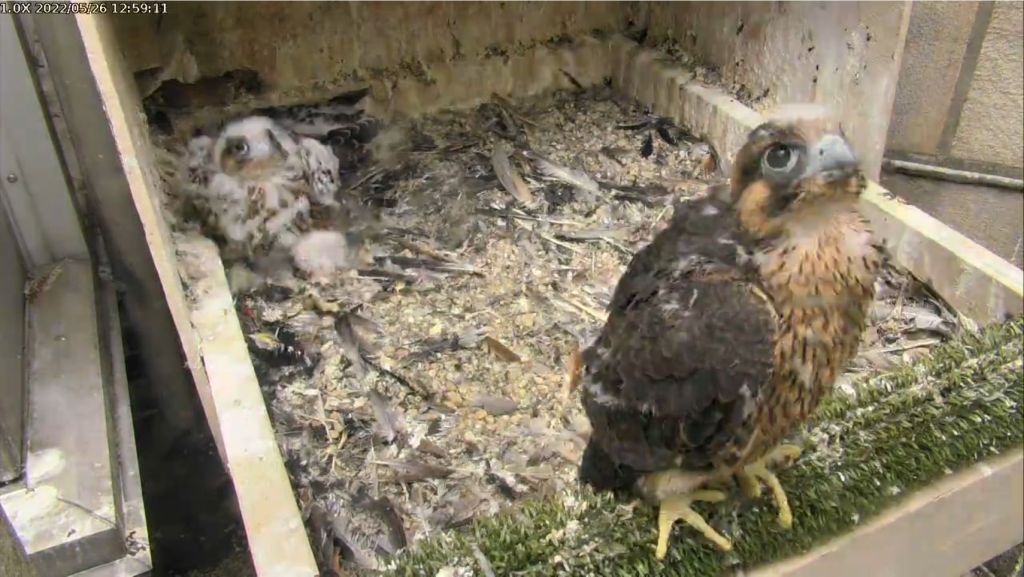
28 May 2022
Two hours after the Pitt peregrine chicks were banded on 26 May, the young male made his first step off the gravel. Of the three chicks (2 females, 1 male) the male has the most advanced feather development so I’m not surprised he made his big move so soon.
Peregrine chicks are hard wired not to leave the nest until they have flight feathers — a step off the cliff at that stage would mean certain death. But by the time they look mostly brown, their flight feathers are nearly ready and they need space to exercise their wings so they embark on the next step: Ledge walking. The first ledge walk at the Cathedral of Leaning is always on the green perch.
In the slideshow below the brown-ist chick contemplates a jump to the green perch at 12:12pm. When he makes it topside we can see he has red tape on his silver band, so this is the male (thus nicknamed “Red Boy”). He lingered on the perch for more than 45 minutes until his mother brought lunch at 12:59.
In the video below he looks a bit unsteady because it’s the first time he has ever perched. He works on his balance and grip, preens and exercises his wings.
Red Boy is ahead of his sisters and may walk off camera later this weekend. Watch for his progress on the National Aviary falconcam.
Stay tuned for Fledge Watch at Schenley Plaza, an opportunity to see the chicks as they prepare to fly. This weekend I’ll announce dates between June 3-8.
